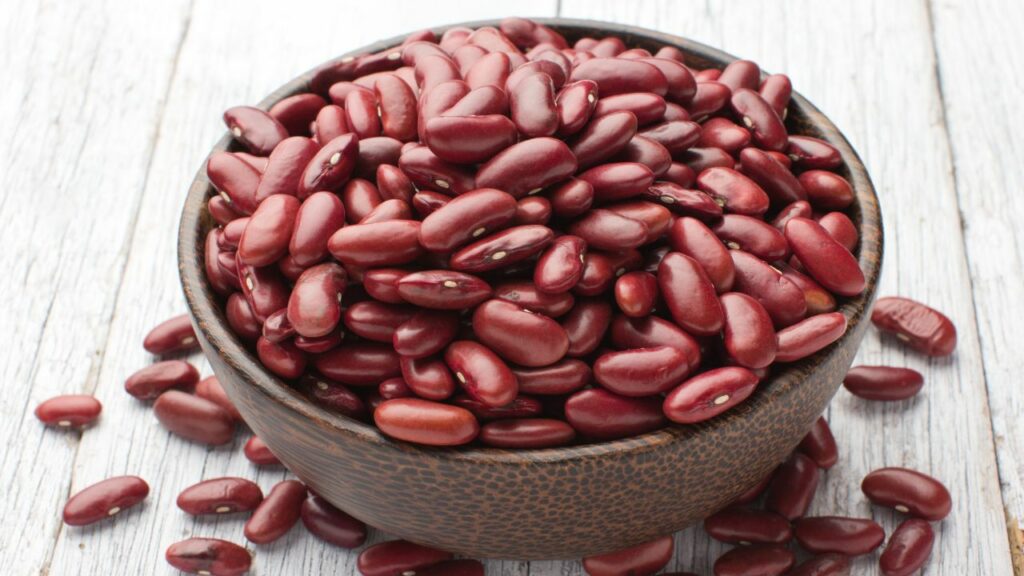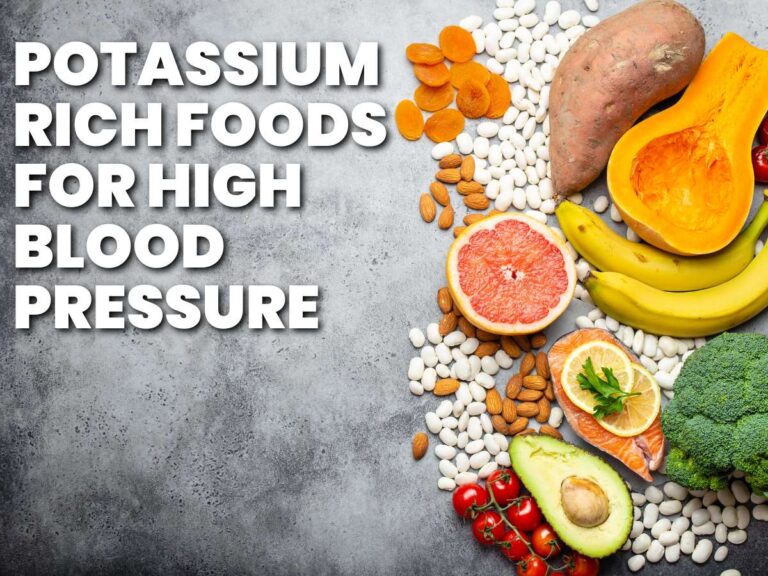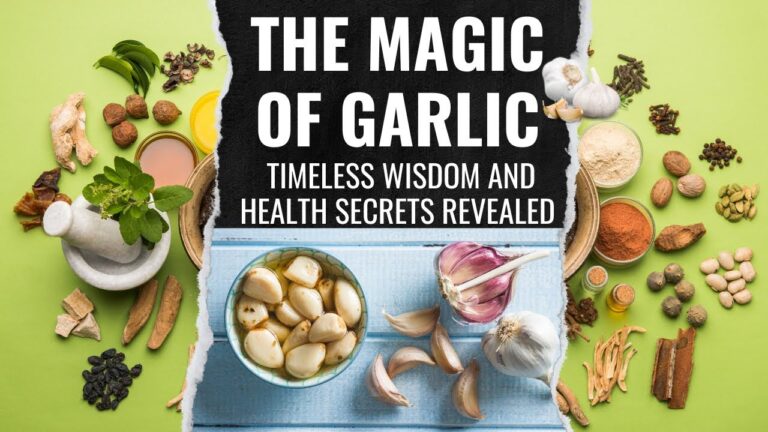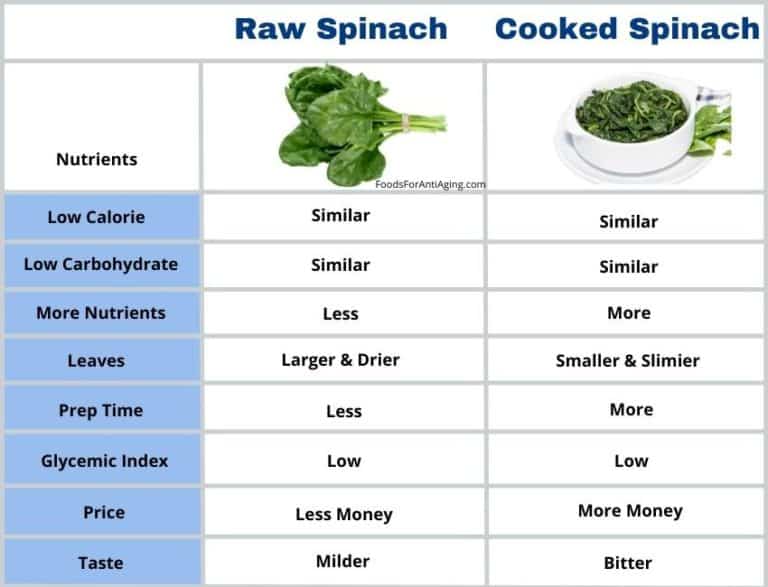The Unsung Superstars: Why Beans Deserve a Starring Role in Every Meal
From the sun-baked fields of ancient civilizations to the bustling kitchens of today, a humble, unassuming hero has silently sustained humanity for millennia. It’s not the glittering grain, nor the succulent fruit, but the unassuming bean – a botanical marvel packed with an extraordinary density of life-giving nutrients. For too long, beans have been relegated to the sidelines, a side dish or a budgetary staple, often overlooked in the grand narrative of modern nutrition. Yet, these fiber and protein superstars are not just a food; they are a story, a legacy, and a blueprint for a healthier, more sustainable future that deserves to be retold, understood, and embraced at every single meal.
For the discerning palate and the inquiring mind, the argument for beans transcends mere dietary recommendation. It delves into the very fabric of human health, ecological balance, and culinary artistry. This is not just about adding a spoonful here or there; it is about recognizing the profound potential of pulses to transform our plates, our health, and our planet, solidifying their rightful place as the cornerstone of a truly nourishing diet.
A Timeless Tale: The Bean’s Journey Through History and Culture
The story of the bean is as old as agriculture itself. Long before the advent of industrial farming, indigenous communities across continents intuitively understood the profound value of these legumes. In Mesoamerica, the "Three Sisters" – corn, beans, and squash – formed a symbiotic agricultural triad that nourished entire civilizations. The corn provided a stalk for the beans to climb, the beans fixed nitrogen in the soil to enrich the corn and squash, and the squash leaves shaded the ground, conserving moisture. This ingenious system was not merely efficient; it was a testament to the integrated wisdom of ancient food systems, where beans were recognized as both a nutritional powerhouse and a keystone species for soil health.
Across the Atlantic, in the Fertile Crescent, lentils and chickpeas were among the earliest domesticated crops, fueling the rise of urban centers and empires. From the Roman legions marching on a diet rich in legumes to the ancient Egyptians revering fava beans, pulses have been a bedrock of human sustenance, providing accessible and robust nutrition in varying climates and terrains. They journeyed along trade routes, adapted to new soils, and seamlessly integrated into the culinary traditions of diverse cultures, from the hearty lentil soups of the Mediterranean to the complex dahls of India, the vibrant black bean stews of Latin America, and the comforting baked beans of North America.
This historical omnipresence is not coincidental. It speaks to the bean’s inherent resilience, its long shelf life, its ability to thrive where other crops might falter, and, most crucially, its exceptional nutritional density. For centuries, beans have been the food of the people, the accessible protein and fiber that sustained labor, fueled growth, and ensured survival, often when meat was a luxury. Their story is one of sustenance, survival, and quiet strength – a narrative that continues to unfold in every bowl of chili, every scoop of hummus, and every vibrant bean salad across the globe.
The Nutritional Powerhouse: Deconstructing the Bean’s Grandeur
To truly appreciate the bean, we must delve beyond its humble exterior and examine the intricate tapestry of nutrients it holds. For the knowledgeable audience, it’s not enough to say "beans are healthy"; we must understand why and how.
A. Protein Prowess: The Muscle-Building Might
One of the most celebrated attributes of beans is their remarkable protein content. As plant-based eating gains prominence, beans emerge as an indispensable source of high-quality protein, rivalling and often surpassing other plant sources. While individual beans might be lower in certain essential amino acids (like methionine, which grains often provide), their overall profile is robust. When consumed as part of a varied diet, the concept of "complementary proteins" – once thought to require precise pairing at every meal – has been largely debunked. The body maintains an amino acid pool, meaning that consuming a variety of plant proteins throughout the day is sufficient to meet all essential amino acid needs.
The protein in beans is not just abundant; it’s beneficial. It contributes to satiety, helping regulate appetite and prevent overeating. It supports muscle repair and growth, making beans an excellent choice for athletes and active individuals. Furthermore, unlike animal proteins, bean protein comes packaged without saturated fat or cholesterol, offering a "cleaner" protein source that supports cardiovascular health rather than potentially compromising it. Studies consistently show that diets rich in plant proteins, particularly from legumes, are associated with lower risks of heart disease, type 2 diabetes, and certain cancers.
B. Fiber Fortification: The Gut’s Best Friend
If protein is the bean’s brawn, fiber is its undisputed champion for overall health. Beans are extraordinary sources of both soluble and insoluble fiber, each playing distinct yet complementary roles in the body.
Soluble fiber, found in abundance in beans, dissolves in water to form a gel-like substance in the digestive tract. This gel has profound effects:
- Cholesterol Reduction: It binds to bile acids in the gut, which are made from cholesterol, and escorts them out of the body. To replenish these bile acids, the liver pulls cholesterol from the bloodstream, particularly LDL ("bad") cholesterol, effectively lowering circulating levels.
- Blood Sugar Regulation: The gel slows down the absorption of glucose into the bloodstream, preventing sharp spikes in blood sugar after meals. This makes beans a cornerstone food for individuals managing diabetes or seeking to prevent it.
- Satiety: The gel also expands in the stomach, contributing to a feeling of fullness and helping manage weight.
Insoluble fiber, the "roughage" component, does not dissolve in water. Its primary role is to add bulk to stool and facilitate its passage through the digestive system.
- Digestive Regularity: It acts like a broom, sweeping waste through the colon, preventing constipation and promoting regular bowel movements.
- Colon Health: By reducing transit time, insoluble fiber minimizes the exposure of the colon lining to potential carcinogens, contributing to a lower risk of colorectal cancer and conditions like diverticulosis.
Beyond these direct benefits, both types of fiber in beans serve as prebiotics. They are the preferred food source for the beneficial bacteria residing in our gut microbiome. When these bacteria ferment bean fiber, they produce short-chain fatty acids (SCFAs) like butyrate, acetate, and propionate. Butyrate, in particular, is a crucial energy source for colon cells, helps maintain the integrity of the gut barrier, and possesses anti-inflammatory properties that can impact everything from immune function to mood regulation. Given that most modern diets are critically deficient in fiber, beans represent a simple yet profound solution to bridging this "fiber gap" and nurturing a thriving inner ecosystem.
C. Micronutrient Marvels: A Treasury of Vitamins and Minerals
The nutritional bounty of beans extends far beyond protein and fiber. They are veritable treasure chests of essential vitamins and minerals, often in forms that are easily absorbed and utilized by the body.
- Iron: Beans are an excellent plant-based source of non-heme iron, crucial for oxygen transport and energy production. Pairing them with Vitamin C-rich foods (like bell peppers, tomatoes, or citrus) significantly enhances iron absorption.
- Folate (Vitamin B9): Vital for cell division, DNA synthesis, and red blood cell formation, folate is particularly important during periods of rapid growth, such as pregnancy, to prevent neural tube defects.
- Magnesium: Involved in over 300 enzymatic reactions, magnesium supports nerve and muscle function, blood glucose control, and bone health.
- Potassium: An essential electrolyte, potassium plays a critical role in maintaining fluid balance, nerve signals, and blood pressure regulation.
- Zinc: Crucial for immune function, wound healing, and DNA synthesis.
- B Vitamins: Beyond folate, beans provide a spectrum of B vitamins, which are coenzymes involved in energy metabolism.
- Antioxidants: Beans, especially darker varieties like black beans, are rich in polyphenols and flavonoids – powerful antioxidants that combat oxidative stress, reduce inflammation, and may protect against chronic diseases.
D. Low Glycemic Index & Complex Carbohydrates: Sustained Energy
Beans are primarily composed of complex carbohydrates, which are digested slowly, leading to a gradual and sustained release of glucose into the bloodstream. This results in a low glycemic index (GI), meaning they cause minimal fluctuations in blood sugar levels. This characteristic is invaluable for:
- Sustained Energy: Providing a steady stream of fuel for the body and brain, preventing energy crashes.
- Blood Sugar Stability: Crucial for individuals with diabetes or insulin resistance, and a key factor in preventing the onset of type 2 diabetes.
- Weight Management: By promoting satiety and stable blood sugar, beans help reduce cravings and regulate appetite.
E. Antinutrients and How to Mitigate Them: Addressing the Nuances
For the knowledgeable audience, it’s important to address common concerns surrounding beans, particularly regarding "antinutrients." While some compounds in raw beans can interfere with nutrient absorption or cause digestive discomfort, proper preparation largely mitigates these effects.
- Phytic Acid (Phytate): Found in the outer layer of beans, phytic acid can bind to minerals like iron, zinc, and calcium, potentially reducing their absorption. However, phytic acid also acts as an antioxidant and may have anti-cancer properties. Soaking, sprouting, and thorough cooking significantly reduce phytic acid levels.
- Lectins (Hemagglutinins): These proteins can cause digestive upset if consumed raw or undercooked. However, the vast majority of lectins are destroyed by soaking and cooking at high temperatures (boiling for at least 10 minutes, or pressure cooking). For most people, properly cooked beans pose no lectin-related issues, and some research even suggests potential benefits of dietary lectins in immune modulation.
- Oligosaccharides (Raffinose and Stachyose): These complex sugars are responsible for the infamous "gassy" effect associated with beans. Humans lack the enzyme to digest them, so they pass undigested into the large intestine where gut bacteria ferment them, producing gas. Gradual introduction, proper soaking (discarding soaking water), thorough cooking, and consuming digestive aids like cumin or ginger can minimize discomfort. Importantly, these oligosaccharides also act as prebiotics, nourishing beneficial gut bacteria.
Understanding these nuances allows for informed consumption, reinforcing that with proper preparation, the benefits of beans far outweigh any theoretical concerns.
The Science Speaks: Health Benefits Backed by Research
The anecdotal wisdom of millennia is now robustly supported by a wealth of scientific research, firmly establishing beans as a cornerstone of preventive health.
A. Cardiovascular Health: A Shield for the Heart
Numerous epidemiological studies and clinical trials have linked regular bean consumption to a significantly reduced risk of cardiovascular disease. The soluble fiber in beans is a potent cholesterol-lowering agent, specifically targeting LDL cholesterol and triglycerides. The potassium content aids in blood pressure regulation, while the magnesium helps maintain a healthy heart rhythm. Furthermore, the antioxidants and anti-inflammatory compounds in beans contribute to overall vascular health, protecting against arterial damage and plaque buildup. A meta-analysis of prospective cohort studies found that higher legume intake was associated with a 10% lower risk of cardiovascular disease and a 14% lower risk of coronary heart disease.
B. Diabetes Management and Prevention: Stabilizing Blood Sugar
For those battling type 2 diabetes or at risk of developing it, beans are an invaluable dietary ally. Their low glycemic index and high fiber content ensure a slow, steady release of glucose, preventing the dangerous blood sugar spikes that characterize the disease. Studies have shown that regular consumption of legumes can improve glycemic control, reduce HbA1c levels, and enhance insulin sensitivity. The protein and fiber also contribute to satiety, aiding in weight management – a critical factor in both preventing and managing type 2 diabetes.
C. Weight Management and Satiety: The Fullness Factor
In an era grappling with rising obesity rates, beans offer a simple, effective tool for weight management. Their unique combination of protein and fiber promotes profound satiety, meaning you feel fuller for longer on fewer calories. This reduces overall caloric intake without deprivation. A systematic review and meta-analysis published in the American Journal of Clinical Nutrition concluded that including pulses in the diet leads to a significant reduction in body fat, even without intentional caloric restriction. They are nutrient-dense yet relatively low in caloric density, allowing for generous portion sizes that satisfy hunger and provide essential nutrients without excess energy.
D. Digestive Health and Gut Microbiome: Nurturing the Inner Ecosystem
The role of beans in fostering a healthy gut microbiome cannot be overstated. As discussed, their prebiotic fibers feed beneficial bacteria, leading to the production of SCFAs crucial for gut health. A diverse and robust gut microbiome is increasingly recognized as central to overall health, influencing everything from immune function and nutrient absorption to mental well-being. Regular bean consumption is associated with increased microbial diversity and the proliferation of beneficial species, contributing to improved digestive regularity, reduced inflammation, and a stronger gut barrier. This healthy gut environment, in turn, offers protection against inflammatory bowel diseases and may reduce the risk of colorectal cancer.
E. Cancer Prevention: A Powerful Defense
The arsenal of nutrients within beans – fiber, antioxidants, and phytochemicals – positions them as a formidable defense against various cancers. Fiber’s role in promoting digestive health and reducing exposure to carcinogens in the colon is well-established. Beyond this, the antioxidants (like flavonoids and phenolic acids) combat oxidative stress, which can damage DNA and initiate cancer development. Specific compounds in beans, such as saponins and protease inhibitors, have demonstrated anti-cancer activity in laboratory studies, inhibiting tumor growth and promoting apoptosis (programmed cell death) in cancer cells. Epidemiological studies consistently link higher legume intake to a lower risk of colorectal, breast, and prostate cancers.
F. Longevity and Healthy Aging: The Blue Zones Secret
Perhaps one of the most compelling endorsements for beans comes from the "Blue Zones" – regions of the world where people live measurably longer, healthier lives, often reaching age 100 with remarkable vitality. A common dietary thread running through all Blue Zones (including Sardinia, Italy; Okinawa, Japan; Nicoya, Costa Rica; Ikaria, Greece; and Loma Linda, California) is a diet rich in legumes. Beans, lentils, and chickpeas form the bedrock of their daily meals, providing sustained energy, critical nutrients, and protection against chronic diseases that plague much of the developed world. Their dietary patterns underscore that a high-bean intake is not just about avoiding illness, but actively promoting a life of vigor and longevity.
Beyond Nutrition: The Environmental and Ethical Imperative
The case for beans extends beyond personal health, touching upon global sustainability and ethical consumption. For the environmentally conscious and ethically driven individual, beans are a beacon of responsible food choices.
A. Sustainability Superstars: Stewards of the Earth
Legumes are environmental heroes. Their unique ability to fix atmospheric nitrogen into the soil, through a symbiotic relationship with specific bacteria in their root nodules, significantly reduces the need for synthetic nitrogen fertilizers. The production of synthetic fertilizers is energy-intensive and contributes substantially to greenhouse gas emissions and water pollution. By naturally enriching the soil, beans improve soil health, reduce the carbon footprint of agriculture, and enhance biodiversity.
Furthermore, beans have a remarkably low water footprint compared to animal proteins. Producing one kilogram of beef, for example, can require vastly more water than producing one kilogram of beans. Shifting dietary patterns towards more plant-based proteins like beans can dramatically reduce our collective environmental impact, conserving precious water resources and mitigating climate change. They are an integral part of sustainable crop rotation systems, helping break pest cycles and improve overall farm resilience.
B. Food Security and Affordability: A Global Solution
In a world grappling with food insecurity, beans stand out as an incredibly accessible and affordable source of essential nutrients. They are relatively inexpensive to produce, store well, and provide a dense package of protein, fiber, vitamins, and minerals that can combat malnutrition in vulnerable populations. For families on a budget, beans offer an unparalleled return on investment, delivering superior nutrition for minimal cost, making healthy eating attainable for everyone. Their role in global food systems is critical for ensuring sustainable and equitable access to nourishing food.
C. Ethical Considerations: A Compassionate Choice
For those motivated by ethical concerns regarding animal welfare and the environmental impact of industrial animal agriculture, beans offer a compelling alternative. By providing a complete and satisfying protein source, they empower individuals to reduce or eliminate their reliance on animal products, aligning dietary choices with ethical principles. Embracing beans is a compassionate choice for both animals and the planet.
Making Beans a Daily Ritual: Practical Integration
The theoretical merits of beans are undeniable, but their true power lies in their practical application. The challenge, for many, is moving from acknowledgment to consistent integration. This requires understanding common hurdles and unlocking the culinary versatility of these superstars.
A. Overcoming Common Hurdles
- The "Gas" Factor: As discussed, this is often the biggest deterrent. Gradual introduction, starting with smaller portions, allows the gut microbiome to adapt. Soaking dried beans overnight (changing the water multiple times) and thoroughly cooking them (boiling canned beans for 10 minutes and rinsing well) helps reduce the oligosaccharides responsible. Spices like cumin, fennel, and ginger can also aid digestion.
- Preparation Time: While dried beans require soaking and cooking, modern conveniences like pressure cookers drastically cut down cooking time. Canned beans, rinsed thoroughly, offer an immediate and convenient option. Batch cooking a large pot of beans on the weekend provides ready-to-use portions for the week.
- Flavor Profiles: The notion that beans are bland is a misconception. Their mild flavor makes them incredibly versatile, acting as a canvas for a myriad of spices, herbs, and aromatics.
B. Bean Varieties and Their Culinary Applications
The world of beans is vast and vibrant, each variety offering unique textures and subtle flavor nuances.
- Black Beans: Earthy, slightly sweet. Perfect for Latin American cuisine: burritos, tacos, salads, soups, black bean burgers, dips.
- Kidney Beans: Robust, hearty texture. A staple in chili, stews, red beans and rice, and salads.
- Chickpeas (Garbanzo Beans): Nutty, firm texture. The foundation of hummus, falafel, curries, roasted snacks, and added to salads or soups.
- Lentils (Red, Green, Brown): Quick-cooking, diverse textures. Red lentils dissolve easily into creamy dahls and soups. Green and brown lentils hold their shape well, ideal for salads, hearty stews, meatless loaves, and savory patties.
- Pinto Beans: Creamy, earthy. The quintessential bean for refried beans, burritos, and Mexican-inspired dishes.
- Cannellini Beans (White Kidney Beans): Mild, creamy texture. Excellent in Italian dishes like minestrone, pasta e fagioli, and white bean salads.
- Fava Beans (Broad Beans): Distinctive, slightly bitter. Popular in Mediterranean and Middle Eastern cuisines, often shelled twice, used in dips, stews, or salads.
- Edamame: Young green soybeans. A popular snack, salad topping, or stir-fry addition, offering a complete protein.
C. Integrating Beans into Every Meal: A Culinary Revolution
The goal is not to force beans where they don’t belong, but to creatively weave them into the existing rhythm of your meals, elevating their nutritional profile without sacrificing flavor or familiarity.
- Breakfast:
- Bean Scrambles/Burritos: Add black beans or pinto beans to egg or tofu scrambles.
- Baked Beans: Homemade, lower-sugar baked beans are a protein-rich addition to toast or alongside breakfast potatoes.
- Bean Patties: Savory patties made from lentils or chickpeas can replace traditional breakfast sausages.
- Lunch:
- Salads: Boost any salad with a handful of chickpeas, cannellini beans, or lentils for sustained energy and protein.
- Soups & Stews: Transform simple vegetable soups into hearty meals by adding kidney beans, black beans, or a mix of pulses.
- Wraps & Sandwiches: Mash chickpeas with herbs for a "tuna-less" salad, or add refried beans to a veggie wrap.
- Bean Bowls: Layer grains, roasted vegetables, and a generous serving of beans (black, pinto, or kidney) with a flavorful sauce.
- Dinner:
- Chilis & Curries: The natural home for beans! Experiment with different varieties and spice blends.
- Pasta Dishes: Add lentils or cannellini beans to pasta sauces, or try pasta made from lentil flour for an extra protein boost.
- Bean Burgers/Meatballs: Create delicious and satisfying plant-based burgers or meatballs using black beans, kidney beans, or lentils.
- Tacos & Enchiladas: Fill with seasoned black beans or pinto beans.
- Side Dishes: Simple seasoned black beans, green beans with garlic, or roasted chickpeas can accompany almost any main course.
- Snacks:
- Roasted Chickpeas/Edamame: A crunchy, protein-packed alternative to chips.
- Hummus/Bean Dips: Serve with vegetable sticks, whole-grain crackers, or pita bread.
D. Tips for Maximizing Flavor and Digestibility
- Aromatics are Key: Sauté onions, garlic, and celery as a base for almost any bean dish.
- Herbs and Spices: Don’t be shy! Cumin, chili powder, oregano, smoked paprika, bay leaves, cilantro, parsley, and rosemary all pair beautifully with different beans.
- Acidity: A splash of lemon juice or vinegar at the end brightens flavors and can also aid digestion.
- Slow Cooking: For dried beans, a long, slow simmer ensures tenderness and deeper flavor.
- Rinsing: Always rinse canned beans thoroughly to remove excess sodium and some of the oligosaccharides.
- Gradual Introduction: If you’re new to beans, start with small portions and gradually increase them to allow your digestive system to adapt.
The Future is Pulses: A Call to Action
The story of the bean is not just a historical account or a scientific treatise; it is a living narrative, continually evolving with every meal we choose to make. The evidence is overwhelming: beans are fiber and protein superstars, micronutrient powerhouses, and champions of gut health, cardiovascular wellness, diabetes prevention, weight management, and cancer protection. Beyond the individual plate, they are a linchpin of ecological sustainability, global food security, and ethical consumption.
In an age where dietary choices carry significant weight, impacting both personal well-being and planetary health, the humble bean stands tall as a beacon of intelligent nutrition. It is time to elevate these unsung heroes from the periphery to the very heart of our culinary traditions. Let us embrace the versatility, celebrate the nutrition, and champion the sustainability of beans. Make them not just an occasional guest, but a cherished, indispensable superstar in every single meal, and witness the profound transformation they bring to your health, your kitchen, and the world. The future of food is rooted in the earth, and its most potent promise lies within the extraordinary power of the mighty bean.







